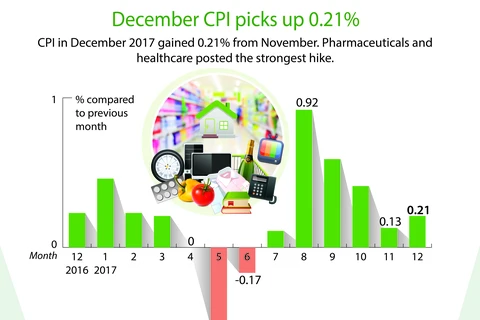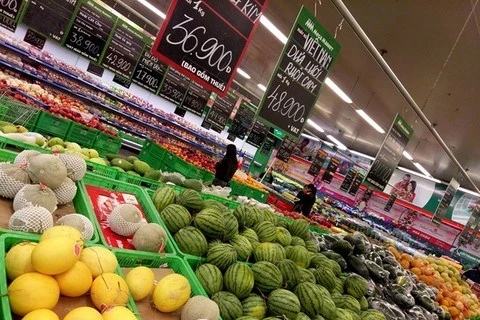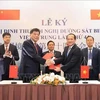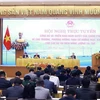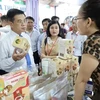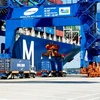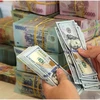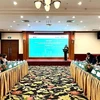Hanoi (VNA) – The consumer price index (CPI) in February edged up 0.73 percent monthly and 3.15 percent annually, largely driven by people’s high demand for commodities and services to be used in the Lunar New Year (Tet) festival, the country’s largest holiday in a year, according to the General Statistics Office (GSO).
The CPI rose by 1.24 percent from December 2017, pushing the index up 2.9 percent in the first two months this year.
Among 11 goods and services categories, nine saw price increases, including food and catering services (1.53 percent); transportation (0.79 percent); beverages and cigarettes (0.75 percent); other goods and services (0.74 percent); culture, entertainment and tourism (0.72 percent).
Director of the GSO’s Price Statistics Department Do Thi Ngoc attributed the hike to strong demand for food, beverages, cigarettes and electricity use during the Tet and massive rice purchase for exports to Indonesia and the Philippines.
Public transportation costs also went up 3.34 percent due to surging travelling demand.
Other factors reined in CPI growth such as falling gas and vegetable prices with respective decreases of 5.14 percent and 1.72 percent.
The price of gold rose 1.83 percent month on months while the price of US Dollar remained stable.
According to the GSO, core inflation in February (CPI exclusive of fresh food, energy and State-run health and education services) moved up 0.49 percent month-on-month and 1.47 percent year-on-year. The index for the first two months this year rose by 1.32 percent.-VNA
The CPI rose by 1.24 percent from December 2017, pushing the index up 2.9 percent in the first two months this year.
Among 11 goods and services categories, nine saw price increases, including food and catering services (1.53 percent); transportation (0.79 percent); beverages and cigarettes (0.75 percent); other goods and services (0.74 percent); culture, entertainment and tourism (0.72 percent).
Director of the GSO’s Price Statistics Department Do Thi Ngoc attributed the hike to strong demand for food, beverages, cigarettes and electricity use during the Tet and massive rice purchase for exports to Indonesia and the Philippines.
Public transportation costs also went up 3.34 percent due to surging travelling demand.
Other factors reined in CPI growth such as falling gas and vegetable prices with respective decreases of 5.14 percent and 1.72 percent.
The price of gold rose 1.83 percent month on months while the price of US Dollar remained stable.
According to the GSO, core inflation in February (CPI exclusive of fresh food, energy and State-run health and education services) moved up 0.49 percent month-on-month and 1.47 percent year-on-year. The index for the first two months this year rose by 1.32 percent.-VNA
VNA

